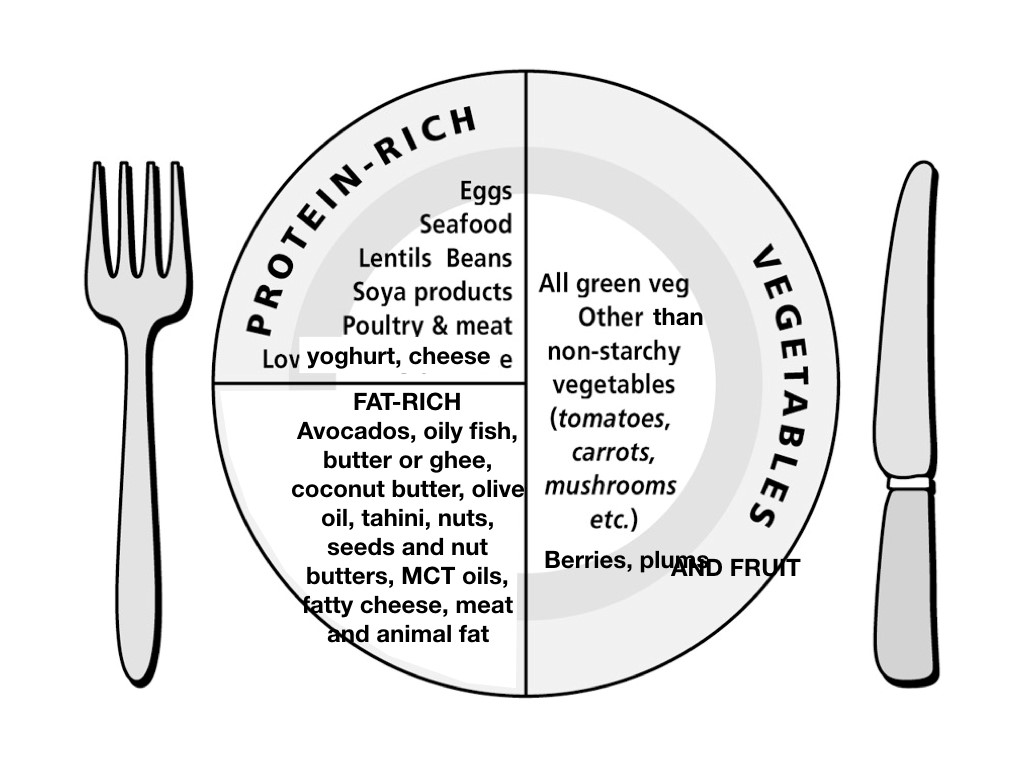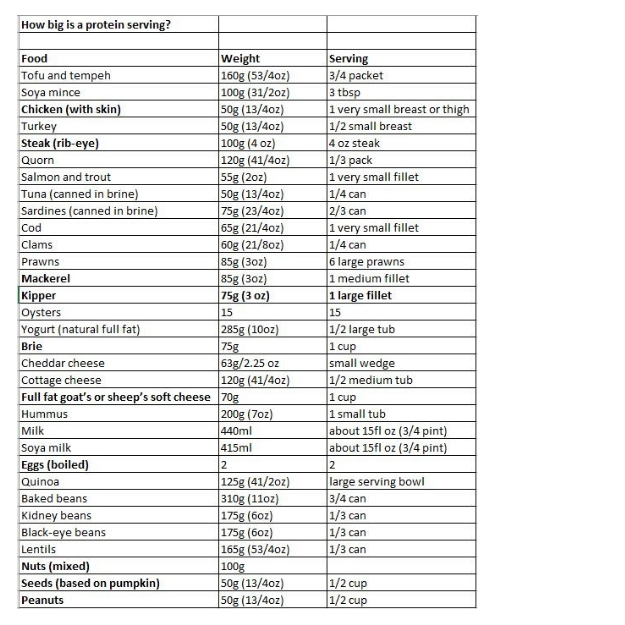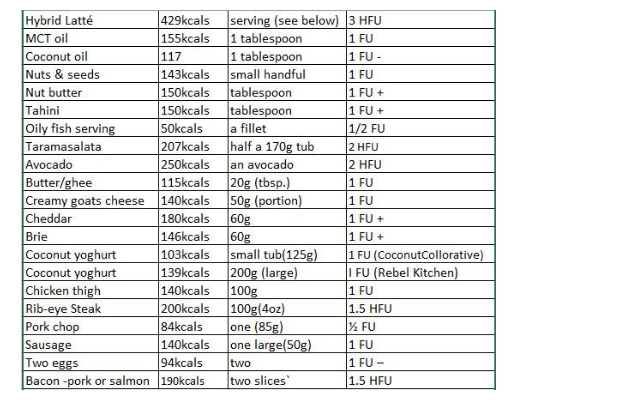We are both lucky, in the western world, to never face famine, and unlucky because this endless supply of carbs all year round is a main driver of Alzheimer’s, arthritis, cancer, diabetes and heart disease.
By either fasting, or switching to a week running on fats and ketones, you trigger a repair process that rejuvenates your cells. Your cells are endless making things, generating and distributing energy, and being made and all this activity creates as much waste and junk within cells. An efficient garbage removal system for each of our billions of cells is essential for our hearts, lungs, kidneys etc to continue functioning properly.
The one we have – known as autophagy – (literally self-eating) – not only hoovers up dead and damaged proteins around the cell but can also dispose of much larger units such as burnt out power plants (mitochondria). All this is then tipped into a pit packed with destructive enzymes which dismantles it to provide fresh energy supplies along with the raw materials to create new proteins.
When you start a high fatThere are many different types of fats; polyunsaturated, monounsaturated, hydrogenated, saturated and trans fat. The body requires good fats (polyunsaturated and monounsaturated) in order to… ketogenic diet the sharp drop in carbohydrates that happens right away triggers the starvation response which, besides bringing down levels of glucose and insulinInsulin is a hormone made by the pancreas. It is responsible for making the body’s cells absorb glucose (sugar) from the blood…., sends out a message that hard times are coming, and recycling and repair is the order of the day.
Variation, not moderation, is the key to health. We are evolutionarily designed to oscillate between periods of relative ‘feast or famine’ which sets up a healthy cycle of growth and repair, helping to supercharge your immunity. This is achieved by switching from a slow carb diet to a high fat diet, supported by intermittent fasting.
1. Go keto for 7 days
That’s why your first winter booster is to go ketogenic for 7 days either by fasting, or eating no carbs and lots of fat, or a combination of both intermittent fasting and no carbs. You need 16 hours without food to help trigger autophagy and kick-start switch to ketosis.
This is not as arduous as it sounds. For example, if you eat dinner at 6pm and, the next day, have my ‘Hybrid Latté (see recipe at the end) for breakfast, which is extremely satisfying, then lunch at 12 you’ve effectively achieved a 16 hour ‘fast’. You don’t need to do this every day, just to kick start your low carb week. What you need to eat is explained at the end of this report, meanwhile read on to discover two other ways to boost your immunity.
2. Vitamin C Booster
It is no surprise that all those berries that burst forth at the end of summer are vitamin CWhat it does: Strengthens immune system – fights infections. Makes collagen, keeping bones, skin and joints firm and strong. Antioxidant, detoxifying pollutants and protecting against… laden. So should you be. Since vitamin C is in and out of the body in under 6 hours it is best to take 1 gram, twice a day. If you’re older and/or have a compromised immune system you could double this, but don’t take more than gives you too loose bowels.
You can also give your immune system a big boost with two weeks of very high dose vitamin C. This is often extremely helpful for those with immune-related disorders, including auto-immune diseases which are very much on the increase. Sometimes people with auto-immune diseases taking, or being offered ‘ immune suppressant drugs, express concern that if vitamin C ‘boosts’ the immune system surely it would be counter-productive. Think of it like this. In an auto-immune disease your internal police force have become belligerent, overactive, on red alert, and keep arresting the wrong people, thus attacking your own cells.
Vitamin C is like a super-efficient police academy which trains your police force (your immune system) to calm down and do the right thing. Thus, nutrients such as vitamin C, but also zincWhat it does: Component of over 200 enzymes in the body, essential for growth, important for healing, controls hormones, aids ability to cope with stress… and berry extracts (black elderberry being the best) help.
If, for two weeks, you take as much as you can without loose bowels, it really tunes up immunity. For some people this is 10 or 20 grams a day. You might not want to be swallowing this many pills so I use my High Strength ImmuneC® powder, which is alkaline balanced, and provides zinc, magnesiumWhat it does: Strengthens bones and teeth, promotes healthy muscles by helping them to relax, also important for PMS, important for heart muscles and nervous… and black elderberry. Practically, you add eg 2 teaspoons (9grams) into a bottle of water and drink throughout the day. if you don’t get loose bowels up the amount. If you do, lower it. This is also a great strategy if you get the first signs of an infection, or suffer from inflammation to maximally support your immune system.
3. Max your vitamin D stores
Your body is programmed to store vitamin DWhat it does: Helps maintain strong and healthy bones by retaining calcium. Deficiency Signs: Joint pain or stiffness, backache, tooth decay, muscle cramps, hair loss…. during the late summer, early autumn months. So, do get outdoors as much as you can, exposing as much skin as you can, be it rolled up sleeves, shorts, face and neck. If you know your vitamin D level I’d recommend getting it up to 75nmol/l to 100nmol. The higher level is especially important if you’re dealing with any immune-related disease – from auto-immune disease to cancer.
In practical terms, if you don’t know your level and just want a boost, get a bottle of Biomulsion D (25mcg per drop) and take three drops a week throughout the winter. If you take my multivitamin you’re getting 15mcg a day, so this will boost your equivalent daily amount to 25mcg. Do this now for two months. Vitamin D stores so that will see you through the worst of the winter.
Your one week high fat keto diet
During this keto week your focus is going to be on keeping carbs to a minimum and eating a high fat diet, with sufficient proteinProteins are large molecules consisting of chains of amino acids. Proteins are essential nutrients for the human body – they are a building block of…. Just as in the low carb phase half of your food plate will be vegetables and fruit, but strictly limiting fruit to berries and the occasional plum, and roughly a quarter of what’s on your plate will be predominantly protein foods.
While you could, technically, just eat meat or fish and vegetables you are either going to end up having more protein than is good for you or hungry. So you want to consciously increase you fat intake. That means eating lots of avocadoes, going heavy with the oil-based salad dressings, putting oil, such as tahini, on vegetables, sautéing spinach with coconut oil, ghee or butter eating oily fish, fatty meats, cheeses, nuts and nut butters and probably making a shake or two. For example you make a High Fat Latte (see recipe at the end). I recommend one ‘keto’ shake a day.
This made fly in the face of your deeply ingrained fat and calorieCalories are a measure of the amount of energy in food. Knowing how many calories are in the food we eat allows us to balance… phobias but you will find you feel easily satisfied. You will not be hungry.

High Fat Food Plate
One of the best ways to get into ketosis quickly is intermittent fasting – not eating for 13 to 16 hours a day. For example, on day 1, assuming you had dinner yesterday at 6pm, start your day with a black coffee or with a dash of full fat milk or cream or a blob of coconut butter or tablespoon of C8 oil. If you don’t like the taste of coconut the C8 oil is neutral but you can just have it on its own and enjoy your black coffee. Then have breakfast at 10am and dinner at 6pm. That way you’ll have had 16 hours fasting. You could even push this a bit further by having our Hybrid Latte (see recipe at the end) at 10am as your breakfast, then lunch at 1pm, or whenever you get hungry. The Hybrid Latte is virtually carb-free, with lots of MCTs so you’ll be really encouraging going into ketosis and effectively ‘carb fasted’ for over 18 hours. Not bad for day 1. If you do this for the first two or three days this will help you get into ketosis quickly, then go to 13 hours fasting – for example breakfast at 9am, dinner at 8am.
If your goal is to lose weight and burn off your body fat you need to be eating just as much as you need to so you’re not hungry, and no more, limiting your carb intake to 15 GLs a day (equivalent to 30 grams of net carbs). Please see any of my Low GL books – for example the Low GL Cookbook or Bible or use the online GL counter
By limiting your GLs per day to 15GLs you’re ensuring, not only that you are eating low carb, but also slow carbs. On average, this will deliver less glucose/insulin increase than 30 grams of ‘average’ carbs so it’s a bit stricter. The reason for this is that the half plate of non-starchy vegetables you’ll be eating with lunch and dinner are still carbohydrateCarbohydrates are the primary source of energy for the body as they can be broken down into glucose (sugar) more readily than either protein or…, but very low GL. For example, five 100g servings or bags of spinach are 1GLs. We’ve assumed that your half a plate of vegetables, twice a day, will average 4GLs, but you don’t need to ‘count’ this – so your carb allowance is still 15GLs, or 5GLs a meal – plus the average 4GLs you’ll be getting from non-starchy vegetables. That’ll still bring you in below the average blood sugar effect of 30 grams of carbs. However, it is still wise to skew your vegetable choices, or quantities, to the top half of the table below in the white section (low GL), and avoiding anything in the grey or black section (high GL). A medium tomato (70g), for example, is 2 GLs. So, ten servings/bags of spinach has the same GL as one tomato. Another example is kale. Most big bags are 180 grams. That’s a little more than 2 GLs – the same as a tomato. So, you’re best using greens liberally, and tomatoes frugally and avoiding potatoes all together.
Vegetables are going to make up half of each ‘main meal’ plate.
There’s something else you can do to lower the GL of what you eat, and that is to always eat carbs WITH protein and fat. So, for example, having two scrambled eggs with avocado and an oatcake will effectively lower the GL of the meal by about 20%. So that 6 GLs oatcake becomes 5 GLs.
There’s one other GL lowering trick – glucomannan fibreFibre is an important part of a balanced diet. There are two type of fibre; soluble and insoluble. Insoluble fibre helps your bowel to pass…. If you have a gram of glucomannan fibre (half a teaspoon or two capsules) at the start of a meal, always with a large glass of water, that also lowers the GL of the meal by about 20%. So that oatcake now counts for 4 GLs. Glucomannan is available at Carbslow (www.holfordirect.com).
Protein – More fish, less meat
Let’s kick off with the protein serving on your plate. The overall amount of protein – by which I mean the protein contained in the various foods – needs to be at least 20g (3/4oz) for each meal. It’s OK to eat more like 30g (1oz), which is double the amount in the chart below/overleaf. The protein-rich food on your plate will provide 15g (1/2oz) of this, and the table below tells you how much you need to eat of each of these to get that 15g (1/2oz). (The one serving of carbohydrate-rich starchy vegetables and two servings of very low-GL vegetables will provide the remaining 5g (1/8oz))
[PI]In the table I’ve listed a lot of fish options and fewer meat options. Fish is much higher in the essential omega-3 fats so, becoming a ‘fishitarian’ has significant health advantages. Does this mean you can never eat red meat? Certainly not but do make sure that your e meat comes from animal have been raised to be healthy – , grazing and eating a natural diet. You may also choose to eat the fattier meats, including the skin. The higher fat options are shown in bold below.

Fats – aim for 10 servings (Hybrid Fat Units – HFU)
In essence you are aiming for liberal amounts of fat every day. A tablespoon, for example, of tahini or peanut butter, or a flat tablespoon of oil, is about 150 calories. If you’re eating 2,000 calories a day, as recommended for women, and 65% of your calories are from fat, then 1,300 needs to come from fat. So, that’s in the region of 9 tablespoons or 3, three times a day. Below we’ve invented a unit (130kcals), so that you’re aiming for 10 of these a day. Think of this as three a meal and 1 in a snack. Or, if you have 3 tablespoons of C8 oil a day – the fastest way to go into ketosis – you’ve got 7 HFU left-maybe 2 meals with 3 HFU and 1 FU in a snack.
If you’re really going for weight loss you may eat less. This often happens because you just don’t feel hungry. If so, skip a snack. If you were eating the equivalent of 1,800 calories, 9 HFU may be more appropriate.
For example, our Hybrid Latté, which is roughly 600kcals and provides almost 20g protein, is 3 HFU. If you just had three of these a day you’d be eating approx 1800kcals, achieving 9 HFU and have sufficient protein.
Here’s roughly what kind of foods you’ll be focusing on to up your fat intake. We’ve picked those that have the most MCTs.

Let’s say you have two scrambled eggs (1 FU), with a slice of smoked salmon (1/2 FU) and half an avocado (1 FU) and a rough oatcake you’ve done 2.5 HFU.
For lunch you have a piece of meat – either chicken thigh, pork chop, big fat sausage of 4oz steak (1 FU) and half a plate of sautéed spinach or kale, made with two tablespoons of either coconut oil, butter or ghee (2 HFU) that’s 3 HFU. If you went for a mackerel or salmon fillet it would be 2.5 HFU.
If, in the afternoon, you had a Hybrid Latté, which includes a tablespoon of C8 or MCT oil or coconut oil, a heaped tablespoon of a nut butter and a handful of nuts, in carb free almond milk that’s 3 HFU.
Alternatively, as a snack, you have half a pot of taramasalata, dipping in celery sticks, or some crudités with 100g of goats cheese and that’s 2 HFU. Or have a smaller portion for 1 FU.
In the evening you go vegetarian – you’ve had enough meat/fish/protein – so you have a vegetarian chilli made with beans and vegetables, sautéing in a tablespoon of olive oil stirring in at the end a tablespoon of tahini, that’s 2 HFU. You certainly don’t need more protein or fat, but if you grated some cheddar on top you’d add another FU.
Whichever way you cut it you’ll achieve your 10 HFU, giving you enough fat, very little carbs, and enough protein, but not too much.
In reality, you’ll find you don’t want to eat that much. If so, skip a snack. Don’t worry if you don’t always hit the target of 10HFU – you’re eating less anyway. But do achieve 8 HFU minimum to guarantee the majority of your calories are coming from fat.
One of the fastest ways to make ketones is to have 3 tablespoons of C8 MCT oil a day. You can just have this ‘neat’ off the spoon. It’s pleasant tasting. Now that’s 3 HFU straight off. You could cut back to two meals like these above, providing 2.5 HFU and have three tablespoons of C8 oil. That’s 8 HFU already.
If you started your day with a coffee with a spoonful of coconut oil or cream that would be another FU straight off.
You can check foods yourself by looking at the label. All foods have to state the amount of fat per serving. This is stated in grams so multiply by 9 to get fat calories. If it’s got 10gs of fat that’s 90kcals of fat – a bit short of an FU. But also check the carbs. If you’ve got max 30 grams of carbs a day, and there’s 5 grams in a serving, then you’re eating up your allowance.
Bear in mind, though, that this is all based on 2,000 calories being the average daily need for a woman. If you are a man you may need a bit more. If you exercise a lot, you’ll need more. On the other hand, if you’re trying to lose weight you may want a little bit less.
Going Vegagenic
If you are vegetarian you’ll be eating eggs, cheese, avocados, coconut-based products, C8 oil, nuts, seeds and nut butters and using tahini liberally. You’ll find small amount of carbs in many foods, so you have to read the labels carefully. Some foods, such as Rebel Kitchen’s and Coconut Collaborative’s coconut yoghurt are good sources of fat but you have to check the carb content. In this respectRebel Kitchen’s is better, with only 0.8g in a 125g serving, while Coconut Collaborative’s 120g pot delivers 7g, almost ten times as much. Checking the label is key.
If you are fishitarian but dairy-free, as Patrick is, you’ll be eating quite a lot of fish, and a couple of pots of taramasalata a week, lots of avocados and coconut-based products, C8 oil, nuts, seeds and nut butters and using tahini liberally.
Example Day’s Menus
Here’s five days of menus to help you get started using recipes that are either obvious or from my cookbooks, each giving the Hybrid Fat Unit( HFU – aiming for 10) and the GLs of carbs (aiming for less than 15 GLs) to give you an idea of how this works. You can mix and match choosing from the breakfasts, main meals and snacks. You’ll probably find one snack is enough. Or skip them altogether as you become ‘fat adapted’, having a substantial breakfast, lunch and dinner. We made sure you’re never substantially over or under your protein needs and included a mixture of recipes for meat and fish eaters, as well as vegetarians.
For the first two days we’ve put in suggested times to include intermittent fasting to help kickstart your transition into ketosis. If you want to see what happened to my (Patrick) glucose and ketone levels on the first three days turn to page xx.
DAY 1 (finish dinner by 7pm the day before)
7am Coffee with blob of coconut butter or tbspn of C8 oil– you can have the C8 oil neat 1HFU
10am 2 egg omelette with smoked salmon & avocado 2.5 HFU 2GLs
(you’ve done 15 hours ‘intermittent fasting’ with no carbs)
1pm Hybrid Latté– includes 1 tbspn C8 oil (see recipe at the end) 3HFU 3GLs
4pm Taramasalata (half a tub) with crudités – celery or cucumber sticks 2HFU1GLs
7pm Vegetable chilli with tahini. (or Chili Con Carné if you prefer – from Holford Low GL Cookbook). Also, 1 tbspn C8 oil 1.5HFU 6GLs
10 HFU 9GLs
DAY 2
7am Coffee with blob of coconut butter. If this isn’t sweet enough for you add half a teaspoon of xylitolXylitol is a completely natural sweetener that looks and tastes like sugar. It is naturally occurring in many fruits and vegetables….. That’s 0.2 GLs., effectively nothing. 1HFU 0GLs
10am Coconut yoghurt, berries and walnuts 2 HFU 2GLs
(you’ve done 15 hours ‘intermittent fasting’ with no carbs)
1pm Marinated salmon steak or chicken thigh with coconut oil sautéed kale and spinach 2 HFU 1GLs
4pm Caffeine free Hybrid Latte 3 HFU 3GLs
7pm Tuna steak with salad with vinaigrette and green beans with olive oil (75g/ 5g carbs/1GL) 2HFU 3GLs
Chicken Curry or Cauliflower, Chickpea and Egg Curry 2HFU 9GLs
10 HFU 15GLs
DAY 3
Breakfast: 3 slices of bacon with two scrambled eggs (pescatarians can have smoked by Simple Salmon) 3HFU 0GLs
Lunch: Peruvian Quinoa Salad (from Ten Secrets Cookbook) – Mix cooked quinoa with chopped coriander, parsley, spring onions, clove of garlic, cherry tomatoes, cumber, half an avocado plus a tablespoon of pumpkin seeds and a tablespoon of olive oil. Season and serve.
2HFU 8GLs
Snack: Goats cheese with a handful of nuts 2HFU 1GLs
Also and 1 tbspn of C8 oil 1 FU.
Dinner: Low Carb Kedgeree 2 HFU 4GLs
10 HFU 13GLs
DAY 4
Breakfast Hybrid Latté 3HFU
Snack – ½ Avocado with ½ tablespoon of tahini 1.5HFU 0GLs
or Guacamole with celery or cucumber sticks 1.5HFU 2 GLs
Lunch: Baked salmon or hot smoked salmon with crème fraîche and herb sauce, served with spinach or kale sautéed in ghee or coconut oil with pesto 2HFU4GLs
Snack: Goat’s Cheese & Artichoke Paté or Hummus & Egg Paté with crudités 1HFU4GLs
(you’ll probably skip this if not feeling that hungry)
1 tbspn of C8 1HFU
Dinner: Bangers and Cauliflower Mash 2FU 5GLs
10 HFU 15GLs
DAY 5
Breakfast: Salmon and Asparagus Omelette 2FU inc 1 tbspn of C8 1HFU1GL
Snack: ½ Avocado with ½ tablespoon of tahini 1.51HFU0GLs
Lunch: Hummus Soufflé 0.5FU inc 1 tbspn of C8 1HFU3GL
Snack: Gravadlax with Quail Eggs (page xx) 1HFU0GLs
Dinner: Spiced Turkey Burgers or Nick’s Beef burgers (Holford Low GL Cookbook) or a Rib-eye steak with broccoli,kale and cauliflower mash 2-3HFU inc 1 tspn C8 3GLs
10 HFU 6GLs
Hybrid Latté
This energising and satisfying shake is the fastest way to go into ketosis. You can have it with or without coffee or caffeine. For all its downsides coffee does, however, help speed up entry into a ketogenic diet.
1 cup (240ml) of low carb almond milk (unsweetened)
½ cup of filtered coffee or run through (less caffeine, more antioxidants)
1 heaped tablespoons of either almond butter, peanut butter (best if one of each – almond has half the carbs)
1 tablespoon of walnuts, pecans or peanuts (nuts and nut butters = 75g)
1 tablespoon of MCT or C8 oil
1 rounded teaspoon of cacao powder carb 3g; 1GL; fat 0
½ teaspoon of cinnamon (good for blood sugar)
Note:Leave out the coffee for caffeine-free and add more almond milk and add a cup of ice cubes for an Iced Latté
3 FUs, 2GLs/8g carbs


Comments
Join the Conversation on our Facebook Page